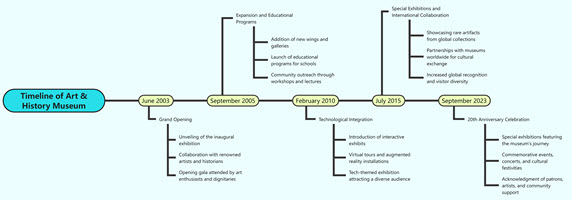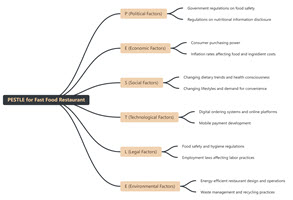The 7Ps of Marketing, an extension of the traditional 4Ps (Product, Price, Place, Promotion), is a holistic framework designed to help businesses develop and execute effective marketing strategies. By incorporating three additional elements (People, Process, and Physical Evidence), this comprehensive approach caters to the unique aspects of service-based offerings, making it particularly valuable for the service industry, including fitness gyms.
Now, let’s first delve into the 7Ps framework and explore its application for fitness businesses:
1. Product
- Refers to the goods or services offered by the business
- Encompasses features, benefits, quality, branding, and packaging
- For a fitness gym, the product includes:
- Range of exercise equipment
- Specialized workout areas (e.g., spin studio, yoga room)
- Personalized training options (e.g., one-on-one sessions, small group classes)
- Ancillary services (e.g., sauna, massage, café)
2. Price
- Determines the perceived value of the product or service
- Considers factors such as costs, competition, and perceived value
- For a fitness gym, pricing strategy involves:
- Equipment and facility maintenance costs
- Market rates and competitor pricing
- Membership tiering and promotional offers
3. Place
- Focuses on the distribution channels and location of the business
- Ensures the product or service is available and accessible to the target audience
- For a fitness gym, place considerations include:
- Physical location and accessibility
- Parking facilities and local transportation links
- Online membership management and virtual class options
4. Promotion
- Encompasses all communication methods used to raise awareness and attract customers
- Includes advertising, public relations, social media, and partnerships
- Fitness gyms may employ promotional strategies such as:
- Digital marketing (e.g., targeted online ads, email campaigns)
- Influencer collaborations and sponsorships
- Free trial offers and referral programs
- Community events and local partnerships
5. People
- Refers to the employees who interact with and serve the customers
- Emphasizes the importance of employee training, attitude, and customer service skills
- For fitness gyms, prioritizing the right people involves:
- Hiring knowledgeable and certified fitness professionals
- Providing ongoing training and development opportunities
- Encouraging a supportive and welcoming gym culture
6. Process
- Encompasses the systems and procedures involved in service delivery
- Focuses on efficiency, consistency, and ease of use for the customer
- Fitness gyms can streamline processes by:
- Implementing user-friendly membership signup and renewal processes
- Offering online class booking and scheduling
- Providing convenient and efficient access control systems
7. Physical Evidence
- Includes the tangible elements that support the service experience
- Covers the physical environment, branding, and any physical items provided
- For fitness gyms, physical evidence may include:
- Well-designed and maintained facilities
- Branded apparel and merchandise
- Member success stories and testimonials displayed throughout the gym
Benefits of the 7Ps Framework
- Provides a comprehensive approach to marketing strategy development
- Helps identify and address all aspects that influence the customer experience
- Enables businesses to differentiate themselves in a competitive market
- Facilitates a holistic understanding of the factors that drive business success
Applying the 7Ps Framework
- Assess the current marketing mix and identify areas for improvement
- Define the target audience and their needs
- Develop strategies for each of the 7Ps that align with business objectives
- Implement the strategies and continuously monitor and adjust as needed
- Measure the effectiveness of the 7Ps approach through key performance indicators (e.g., member satisfaction, retention rates, revenue growth)

- Product:
- Distinctive features: Advanced functionality, integration capabilities, and customization options
- Meeting customer needs: Addressing specific business challenges, providing automation solutions, and improving productivity
- Planned enhancements: Adding new features based on customer feedback and industry trends, enhancing data security measures, and expanding integration options
- Competitive differentiation: Exclusive partnerships with industry leaders, AI-powered algorithms, and robust analytics and reporting capabilities
- Product availability: Cloud-based software accessible through web browsers or dedicated applications
- Price:
- Competitive pricing: Offering affordable subscription plans compared to other SaaS providers in the market
- Factors influencing pricing: Cost of software development, hosting, and infrastructure expenses, and pricing strategies of competitors
- Alignment with product value: Pricing reflects the functionality, features, and scalability of the software
- Promotional pricing strategies: Free trial periods, discounted annual subscriptions, and referral incentives
- Place:
- Distribution channels: Online subscription model with secure login credentials and user management functionality
- Accessibility for the target audience: Cross-platform compatibility, multiple language support, and global availability
- Enhanced distribution plans: Exploring integration partnerships with popular business software platforms and expanding customer support coverage in different time zones
- Promotion:
- Methods for product promotion: Digital marketing campaigns, content marketing, and targeted online advertising
- Effective marketing strategies: Showcasing case studies and success stories, providing educational webinars, and offering demo versions of the software
- Product value communication: Highlighting the software’s unique features, ease of use, and potential benefits for businesses
- Brand visibility plans: Collaborating with industry influencers, sponsoring relevant conferences and events, and participating in software expos
- People:
- Employee influence on customer experience: Knowledgeable customer support representatives and dedicated customer success managers
- Employee training programs: Regular training on new software features, industry updates, and effective customer communication
- (Employee training programs)/Customer service quality: Timely and helpful responses to customer inquiries, providing technical assistance and software troubleshooting
- Process:
- Systems ensuring a smooth customer journey: Seamless onboarding, user-friendly interface, and responsive customer support
- Efficiency in service delivery: Regular software updates and bug fixes, as well as quick response times to customer inquiries
- Process improvement strategies: Continuous user feedback collection and analysis, agile development methodologies, and proactive customer success management
- Physical Evidence:
- Tangible elements supporting service delivery: Branded software documentation, training materials, and packaging for physical software installations, if applicable
- Physical environment impact on customer experience: Well-designed user interface, intuitive navigation, and visually appealing data visualizations
- Branding in physical spaces: Consistent branding in software interfaces, email communications, and support portals
- Enhanced physical evidence strategies: Showcasing customer testimonials, featuring industry awards or certifications, and providing software usage analytics to demonstrate value
Guidelines for Implementing the 7Ps of Marketing Mix for a SaaS Company:
- Assess the current marketing mix and identify areas for improvement: Conduct a thorough analysis of your existing marketing strategies and identify opportunities to strengthen each of the 7Ps.
- Define your target audience and their needs: Understand your customers’ pain points, preferences, and expectations to align your marketing mix accordingly.
- Develop strategies for each of the 7Ps: Craft comprehensive plans for each element of the marketing mix, ensuring they work in harmony to deliver a cohesive and effective marketing strategy.
- Implement the strategies and continuously monitor and adjust as needed: Execute your marketing plans, track their performance, and make necessary adjustments based on customer feedback and market changes.
- Measure the effectiveness of the 7Ps approach: Establish key performance indicators (KPIs) to evaluate the impact of your marketing mix and make data-driven decisions for ongoing optimization.
By leveraging the 7Ps of Marketing, a SaaS company can create a well-rounded and strategic marketing plan that addresses the unique aspects of its service-based offering, ultimately enhancing its competitiveness, driving customer satisfaction, and achieving sustainable business growth.
Elevate Your Ideas: Discover the Transformative Power of Smart Board
Experience the true power of visual mind mapping with Smart Board, where well-designed structures take your creativity to new heights. Smart Board is a comprehensive mind mapping and brainstorming tool that offers a wide range of features to help you visualize your ideas, organize your thoughts, and unlock your full creative potential. Leveraging a hierarchical structure and customizable templates, Smart Board simplifies complex information and allows you to break down projects into manageable components. Explore a treasure trove of captivating styles, fonts, and formatting options to elevate your designs, all while enjoying the convenience of cloud storage and seamless collaboration. Whether you’re planning a project, solving intricate problems, or simply seeking to streamline your ideation process, Smart Board empowers you to harness the true power of visual mind mapping and reach new levels of productivity and innovation.

Timeline of Restaurant

Meeting Agenda for Creating a Budget Plan for a Nonprofit Organization

Organizational Chart of Office Department System

Brace Map of Stages of Photosynthesis

Five Forces Analysis for the Renewable Energy Industry

Five Forces Analysis for the Food and Beverage Industry

Organizational Chart of NGO Programs Director

Five Forces Analysis for the E-commerce Industry

Location Breakdown Structure (LBS) of Agricultural Land Utilization

Brace Map

Timeline of Art & History Museum

Organizational Breakdown Structure (OBS)

4P Marketing Mix

Total Quality Management for Education

McKinsey 7-S Framework for Improving Patient Care in Healthcare Industry

PDCA for improving software development processes in a technology startup

SMART Goals to Increase Click-through Rates of Published Content

McKinsey 7-S Framework for Value Chain Analysis in the Retail Industry

Ansoff Matrix of Fat-Free Milk

Five Forces Analysis For the Automobile Industry

Brace Map of Human Respiratory System

PESTLE for Fast Food Restaurant

SMART Goals to Grow My Time Management Skills

Total Quality Management for Hospitality Industry

Organizational Chart of Retail Store

7Ps of Marketing Mix for a Smartphone

5W’s for Implementing Remote Work Policies in the Technology Sector

Bubble Map of Leadership Qualities

Business Model Canvas for a Sustainable Fashion Brand

PDCA for Improving Customer Service in a Call Center

Decision Making for New Product Launch

Location Breakdown Structure (LBS)

Procurement Breakdown Structure (PBS) of Sustainable Agriculture Project

Tree Chart of World Religions

Timeline of NGO Organization

5W’s for Enhancing Cybersecurity in the Banking Sector
